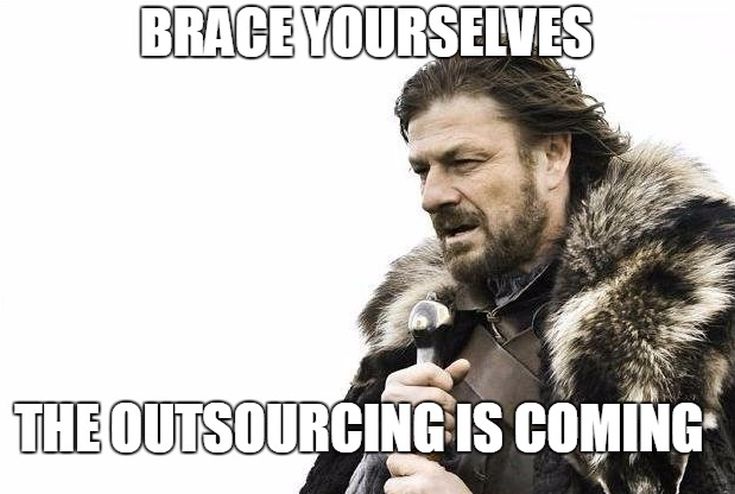
Construction Subcontracting – Right Way vs Evil Way

We’re often asked if we subcontract any of our work. The quick and resounding answer is “yes, yes we do”. Around 30% of our scheduled work is subcontracted. This may change in time, but for now, it’s a figure that we’re happy with.
The genesis of this post is based not only on the frequency with which we’re asked this question but also to address the negative associations people attach to it.
“We don’t subcontract, all our staff are in-house”
It’s a statement that’s often espoused to convince clients that a company is bigger than it actually is. It’s the go-to-phrase to mask the fact that there exists deficiencies in a company’s skill set. While there may be general contractors that don’t subcontract any work at all, for the most part, you’d be hard pressed to find them.
The rationale behind such a retort is understandable. Subcontracting done under the right conditions is entirely justifiable and necessary but in anticipating a client’s preconceived ideas of subcontracting, a falsehood seems the easier option to allay a client’s concern rather than engage in a lengthy explanation. However, choosing this path of least resistance sets the client-contractor relationship off on the wrong foot and in any case, it’s usually apparent when subcontractors are being used, which doesn’t bode well for maintaining trust later on.
Subcontracting specific elements of a project that lie outside a contractor’s core competency is to be expected and if done correctly, can lead to great project outcomes and happy clients. This is a far better option than the contractor attempting work they simply aren’t capable of doing in order to save costs or through some misguided sense of pride or delusional sense of competency.

Subcontracting: The evil side
Typically, the idea of subcontracting is met with a raised eyebrow. You’re seen as the grubby middleman bringing in the revenue only to then shift off the work and responsibility to someone else while you go vacationing somewhere.
The sad truth that may reinforce this way of thinking, is that some companies do in fact operate this way. The consoling fact is that they’ll quickly be darwinised, However, it’s the client that ends up paying the price on the contractor’s path to extinction.
In our experience, companies that operate this way are in the minority, and the stereotypical view of subcontracting, for the most part, is wide off the mark. That aside, one of the biggest mistakes we’ve seen is attempting to hire an unknown subcontractor under serious time constraints. This usually results in making recruiting decisions without carrying out proper due diligence.
A contractor I knew many years ago, subcontracted a substantial portion of their project to a team they had spoken to only a few times. They hired them quickly, without reference checks and without inspecting their past work because their price was relatively cheaper and because they were out of time. The subcontractor carried out shoddy work that needed constant correction and inspection and eventually, they were terminated, leading to a disrupted completion schedule, a furious contractor and a frustrated client. It’s one of the drawbacks of subcontracting if not done with proper planning, thought and consideration.
It’s an experience not foreign to us. We’ve been in similar positions early on in our history, where diligence unfortunately took a back seat to expediency. Random hiring without the necessary quality checks is a pathway to disaster. We’re recounted stories of this kind on a worryingly regular basis from our friends in the industry. It’s bad practice and should be planned out.

Subcontracting: The right way
Subcontracting correctly and with the customer’s interests at heart, as opposed to calling in a hired gun that you’re not 100% sure about, is tough but imperative if projects are to run successfully. Pre-qualifying subcontractors, checking references, inspecting past work, speaking to their past clients, carefully monitoring them on site and conducting performance reviews should be par for the course. Such a process won’t magically align the stars and eradicate all potential problems, but will certainly reduce the scope for error by orders of magnitude. This all takes time and as such, is not something that should be left to the last minute when you are left utterly desperate for a team to join your ranks.
A sudden sharp growth in sales, booked up subcontractors or an increase in your churn rate will leave you exposed and clamouring for bodies on site. A frantic mindset leads to hasty decisions. Something will be overlooked. Unwanted compromises will be made. There are plenty that turn to labour agencies, but for large scale hiring, this is a poor short term fix as you simply cannot control the personality types that turn up and attempting to engineer a unified team out of thin air is not far removed from attempting a Hail Mary shot.
Once all hiring conditions have been met, the only determinant of a reliable team is time. Carefully monitored time on site and appraisals of workmanship and key performance indicators over time will tell you whether you have a star team on your hands. Having a network of subcontractors that meet all these requirements is an arduous process but one that’s well worth investing the time in. Building a supply chain comprised of time tested, reliable teams who embrace your culture and methodology and with whom you share a mutual understanding and trust, should be the ultimate aim.
Cause of project failure
Of all the rescue operations we’ve carried out for clients to finish off their jobs that were abandoned by contractors, the cause of failure in 60% of the cases was down to unreliable and poor quality subcontractors that were used. With construction projects encompassing the combined effort of multiple trades, having too many that go off the rails in terms of deadlines and workmanship can be at best disruptive and at worst, absolutely fatal to a project’s success. Even having one tradesmen making a severe enough mistake can cost big in terms of project cost and deadlines and not everyone is willing to stick around when the situation gets out of control.

“Always be hiring”
“Always be hiring” is a nugget of wisdom I’ve stumbled upon on various occasions. It’s one I feel has merit and is indeed a notion that we model in our recruitment policy. In essence, it involves searching for that superstar team even when you don’t need them. In practice it means never being left short of quality. This is a great approach when you face the added layer of difficulty of ensuring that subcontractors adopt your company culture and embrace your values as their own.
There is a notion that subcontractors don’t care about your clients as much as you do. There is an element of truth here. In industry’s were subcontractor’s are far removed from the client, then the concern lessens as long as they pump out quality work. In construction (whether for residential or commercial clients), where subcontractor’s can be a stone’s throw away from a client at any given time, culture adoption becomes vastly more important.
Subcontractor’s must be a natural extension to the contractor’s business. Their behaviour and character should reflect a contractor’s values at all times. In practice, this means hiring people who in reality do share your values rather than pay lip service to them. Otherwise on projects spanning months, the facade will eventually break down.
As opposed to having your own in-house teams that can be gradually recruited on the basis of technical skills as well as character traits that match your vision and values, subcontractor’s have their own individuals which may or may not be a good fit for your company and the image you want to project. Finding technically proficient subcontractors who embrace your values and hold their individual workers accountable for setting and maintaining a certain standard is incredibly tough. It’s far too easy to hire someone on the back of a recommendation or an internet search, with no reference checks and trusting their word that they’ll get the job done.
A company’s job is to produce cheerleader customers who are referenceable post-build and who will evangelise on your behalf. It’s the best sales force you could hope to have and if subcontractors take on a percentage of your workload, that should be at the forefront of their mind.


Leave a Reply
Be the First to Comment!